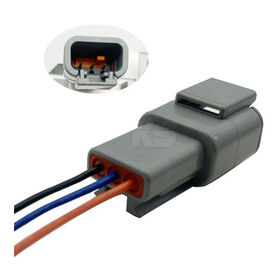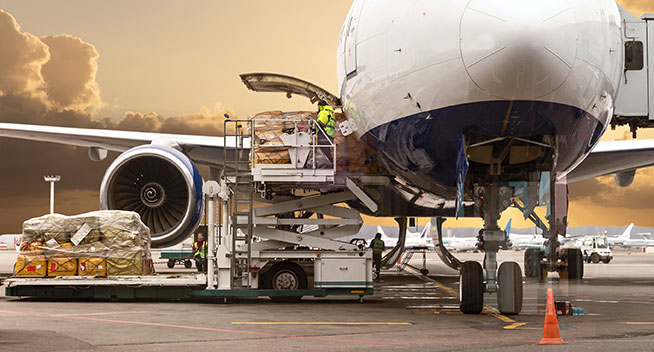Shipping to the EU - What is the cheapest option?

As your freight transportation volume grows, it's time to consider ocean freight. This is your guide to all things ocean, from choosing which mode is right for you to calculating costs and transit times.
Ocean Freight Meaning: What Is Ocean Freight?
By using shipping containers, goods can be transported by sea.

Most importers and exporters transport their goods by sea. In fact, 90% of everything is sent by sea and ocean freight. International freight transport modes (courier, air freight standard, express air freight) are all faster, but they are also more expensive. These other modes are usually used for shipments of small sizes or for those with high values.
Many freight forwarders now offer express shipping, particularly if ocean freight is too slow but air freight is too expensive. The service is frequently just as fast as air freight, but may be less expensive. We streamline ocean freight processes and only connect with faster services and premium trucking companies.
Why Ship By Sea?
One container can hold ten thousand beer bottles! And ocean freight is cheaper. Any shipment weighing more than 500 kg is generally too heavy for air freight. With this chargeable weight calculator, you can find out whether you will be charged by the actual weight or dimensional weight for your shipment. Check out our FBX index for live international shipping rates.
Having fewer restrictions International law, national law, carrier organization regulations and individual carrier regulations all play a role in defining and determining what goods are considered dangerous for transport. There are generally more products restricted for air cargo versus ocean freight, including: gases (e.g. lamp bulbs), all things flammable (e.g. As well as toxic or corrosive items (e.g., perfumes, Samsung Galaxy Note 7), etc. batteries), magnetic substances (e.g. Public health risks (e.g. speakers), oxidizers, and biochemical products (e.g. chemical medicines) are also evaluated. untanned hides). Check out the Hazardous Material Table for more information.
CO2 emissions from ocean freight are negligible compared to air freight. Shipment In this study, 2 tonnes shipped by ocean freight will lead to 150 kg of CO2 emissions while 2 tonnes shipped air freight will cause 6605 kg of CO2 emissions.
ocean freight
What Are The Downsides Of Ocean Freight?
Speedy airplanes move about thirty times faster than ocean liners - passenger jets cruise at 575 mph while slow-steaming ocean liners move at 16-18 mph. The air freight route from China to the US, therefore, usually takes at least 20 days longer than ocean freight.
Sea freight has a much higher level of reliability due to port congestion, customs delays, and bad weather conditions. The tracking technology used by air cargo is often far more advanced than that used by ocean freight. Therefore, ocean freight is more likely to get lost than air freight. This is particularly true for ocean shipments that are less than a container load. In spite of this, ocean freight is becoming more reliable thanks to digitization.
Unlike air cargo, ocean freight is more likely to be damaged or destroyed. Due to longer transit times and more movement on ships, it is in transit longer. However, you shouldn't be worried about ocean cargo falling off ships. A common myth claims that the container movement is lost 10000 times per year, but it is actually 546 of the 120 million movements that go down the drain. Even less likely is piracy. A few hotspots in recent years have been the Horn of Africa, the Gulf of Guinea, and the Malacca Strait.
Ocean Freight Services
There are two additional ocean and sea freight options: the full container load (FCL) and the less than container load (LCL). A LCL container holds several shipments. Moreover, this means more paperwork for the forwarder, in addition to consolidating many shipments into a container and de-consolidating them after the main transit. This gives LCL three disadvantages:
Delivery of LCL shipments takes longer than FCL shipments. A couple of extra weeks is recommended for LCL.
Having LCL increases the risk for damage, misplacement, and loss.
LCL costs more per cubic meter.
Once your shipment is large enough, and shipping rates are cheaper for FCL, it might be worth sending a full container, even if you don't fill the entire container. There is a point where upgrading from LCL to FCL (the smallest sized container is a 20 footer) occurs around 15 cubic meters.
Sea Freight Rates per kg

Except for particularly heavy items, LCL is typically priced per volume, not by weight.
Choose the most cost-effective mode for your product using these rules of thumb:
A shipment weighing more than 500 kg becomes uneconomical to ship by air.
Shipments from China to the United States take about 30-40 days by ocean freight.
An air freight shipment between China and the US of about 150 kg and 500 kg costs about $5-8 per kilo and takes around 8-10 days.
The cost of express air freight is higher, but it is quicker.
Express freight can be economically used for packages lighter than 150 kg.
These are some of the common ocean and sea freight rates and charges in your freight quote:
Ocean freight quotes and invoices will include these items:
